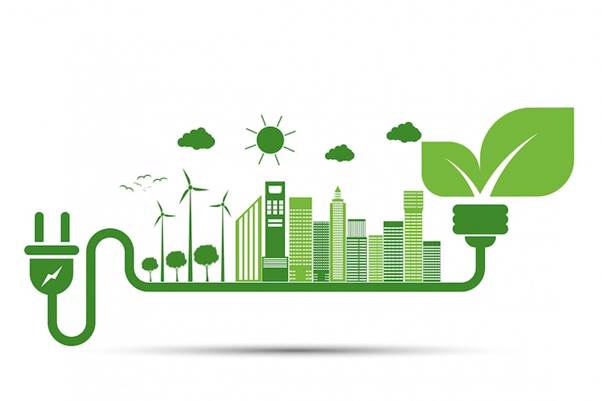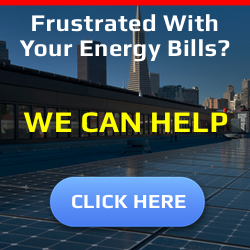The clean energy transition is no longer an aspiration of tomorrow but a current imperative. With the planet struggling to combat rising climate change, energy insecurity, and the economic instability of fossil fuels, energy policy has become one of the determinants of creating a sustainable future. Governments everywhere are incentivizing and regulating the transition to low-carbon energy systems, and using public-private partnerships and other policy methods to fuel the innovation and investment necessary for long-term resiliency. These policies are not just helping decarbonize the global economy, but also sparking innovation, supportive investments, and long-term resiliency. The global clean energy market is anticipated to surpass a valuation of US$ 2231.4 billion by the end of 2031 with an expected CAGR of 10.7% from 2023 to 2031.
Over the last two decades, there have been dramatic transformations in the energy policies of many countries. This was the result of each country trying to meet ambitious climate commitments and trying to reduce fossil-fuel based energy reliance. It is also no longer considered a purely environmental approach; however, it can be argued that the clean energy transition (understood broadly) is now considered a reasonable geopolitical and economic approach.
A pivotal moment was in 2015 when the Paris Agreement was signed. Signatories committed to limits of warming of well below 2°C, with aspirational targets of 1.5°C. The Agreement helped mobilize governments to set national targets for net-zero emissions and shift their energy policies to accomplish them. In addition, major legislation in the U.S., such as the Infrastructure Investment and Jobs Act (IIJA) and the Inflation Reduction Act (IRA), allocated hundreds of billions for clean energy, electric vehicles (EVs), and green infrastructure.
In parallel, the European Union Green Deal sets a comprehensive plan towards carbon neutrality in 2050. This is through ambitious emission targets, support for renewable technology, and sustainability investment frameworks. The world’s biggest emitter, China, also pledged to peak emissions before 2030 and become carbon-neutral by 2060. Solar, wind power and electric transport are the areas China is heavily investing in, aided by government subsidies as well as the expansion of carbon trading.
These policy changes reflect a new international consensus: the transition to clean energy is an economic and strategic imperative, not a burden.
At the heart of clean energy growth are strong regulatory systems. These policies bring certainty to investors, level the playing field for new technologies, and drive markets toward sustainability.
Perhaps the strongest tool for regulation is carbon pricing, requiring polluters to internalize the environmental price of their emissions. Carbon taxes and cap-and-trade mechanisms are gaining ground in all regions. The European Union Emissions Trading System (EU ETS) has been successful in lowering power and industrial emissions by giving economic value to carbon and rewarding less pollution.
Energy efficiency standards are another key regulatory column. They encompass building code mandates, appliance standards, and fuel efficiency standards for vehicles. For instance, the U.S. Energy Independence and Security Act has spurred dramatic increases in fuel efficiency and lighting standards. Likewise, the EU’s Energy Efficiency Directive provides binding energy efficiency targets for member states.
Renewable energy targets also have an important role to play. Legally binding targets guarantee a certain percentage of energy is from renewables, thereby promoting long-term investment and infrastructure build-out. The EU’s current target is to achieve 42.5% renewables by 2030, with some member states targeting even higher.
Strong regulation is the scaffolding on which clean energy markets develop. Without transparent rules and expectations, private investment is constrained, and technology adoption is slowed.
Regulation provides the foundation, but financial incentives are the catalyst for fast-paced clean energy uptake. By reducing the cost barriers for new technologies, governments can risk-off investment and trigger innovation.
Subsidies and Feed-in Tariffs (FITs) have played a key role in scaling up renewable energy. Germany’s FIT scheme, for example, offered assured payments to renewable energy producers, which helped establish one of the world’s biggest solar and wind markets. In the United States, the Investment Tax Credit (ITC) and Production Tax Credit (PTC) have facilitated the installation of thousands of megawatts of clean energy.
Electric vehicle incentives are infrastructure also growing. The U.S. provides up to $7,500 in tax credits for EV buyers, while European nations offer subsidies, tax exemptions, and grants for EV purchases and charging. These programs are important for overcoming the greater upfront cost of EVs and stimulating consumer adoption.
No less crucial is funding clean technology research and development (R&D). Emerging technologies such as green hydrogen, carbon capture and storage (CCS), and advanced nuclear take decades of research and investment before becoming commercially viable. Initiatives such as the U.S. Clean Energy Innovation Fund and the EU’s Horizon Europe initiative infuse needed funds into getting those products to market.
Collectively, incentives lower risk costs, mobilize private capital and establish markets for clean technologies that may not be able to compete with entrenched fossil fuels otherwise.
The magnitude of the transition to clean energy requires collaboration between the private and public sectors. PPPs leverage government capital with private-sector efficiency and innovation, facilitating large-scale infrastructure development and mass deployment of technology.
One of the most important areas of cooperation is project financing. The U.S. Department of Energy Loan Programs Office, for instance, guarantees loans for clean energy projects, facilitating private companies to access funding. This de-risk big-ticket investments and incentivizes developers to undertake innovative projects that would otherwise be considered too risky.
Another space is grid modernization. The roll-in of renewable power into old power infrastructure necessitates smart grid investments, battery storage, and digital technology. All these need to be implemented through collaboration among utilities, technology companies, and regulators. In nations such as India, the International Solar Alliance (ISA) is facilitating similar collaboration in emerging economies through the alignment of public funding with private capital.
Public-private partnerships also drive the commercialization of innovation. Technologies made in public laboratories may be subject to market entry barriers. PPPs enable such technologies to scale faster by taking advantage of the private sector’s manufacturing abilities and distribution channels.
Such collaborations are crucial for realizing the speed and scope of change that is needed to fulfill climate ambitions.
Conclusion: Policy Is the Engine of the Clean Energy Transition
Energy policy is not just a supporting factor—it is the main driver of the clean energy transition. Regulations provide the building block, incentives induce market entry, and public-private partnership guarantees that innovation is scaled up effectively. However, for energy policy to continue being effective, it should be dynamic and forward-looking.
Policymakers must:
- Enforce existing regulations by linking them to the most recent climate science.
- Invest strategically in new technologies and grid infrastructure to support long-term resilience.
- Develop cross-sector partnerships to share risk and drive deployment.
The world stands at the threshold. The technologies and tools for a clean energy world are already at hand. The political will and policy coordination required to translate ambition into action is now needed. With robust and stable energy policy, the transition to clean energy won’t only be inevitable—it will be spurred on.
References:
Forbes: Inflation Reduction Act Benefits: Electric Vehicle Tax Incentives For Consumers and U.S. Automakers
Energy Efficiency Directive: Energy Efficiency Targets








